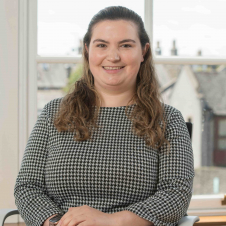Each year a taxpayer has a maximum Annual Allowance of £40,000 which they can contribute towards their pension scheme (subject to having sufficient "net relevant earnings"). Contributions in excess of this sum will not attract any tax relief. Any unused Annual Allowances can be carried forward for three tax years.
The Annual Allowance will be reduced by £1 for every £2 that a taxpayer's income exceeds £240,000, with the minimum allowance of £4,000 being available to taxpayers with income of £312,000+. There are rules on how you calculate whether a person’s income is above the £240,000 threshold and you should speak to a tax or financial adviser to understand whether the tapering affects you.
Please note that some individuals are subject to a lower Annual Allowance, known as the Money Purchase Allowance, of only £4,000 where they have previously accessed pension savings.
Lifetime Allowance
The Lifetime Allowance remains frozen at £1,073,100, but the pensions charge no longer applies from 5 April 2023 and the Lifetime Allowance limit will be abolished by 5 April 2024. Individuals with pensions exceeding the Lifetime Allowance should seek specialist advice on how best to manage the position.
Qualifying pension contributions attract income tax relief at your marginal rate of income tax. Combined with tax-free growth within your pension fund and the ability to withdraw a tax-free lump sum upon retirement, pension contributions are an attractive method of pension planning and tax efficiency planning. The initial tax savings may be more substantial where the contributions are made via a salary sacrifice arrangement.
It is therefore worth considering whether any additional contributions should be made into your pension scheme ahead of 5 April 2023 in order to obtain tax relief at any higher or additional rates. Unused allowances from the 2019/20, 2020/21, and 2021/22 tax years may also be brought forward to 2022/23 (subject to having sufficient net relevant earnings), thereby increasing the amount of contributions a taxpayer can make into their pension pot while still benefiting from the tax reliefs available.
The limits on the amounts you can contribute to your pension are increasing from 6 April 2023 as follows:
- The maximum Annual Allowance is being increased to £60,000,
- The minimum Annual Allowance for those subject to tapering is being increased to £10,000,
- The threshold at which tapering will apply will increase to £260,000,
- The Money Purchase Allowance will increase to £10,000, and
- The Lifetime Allowance is being abolished (as noted above).
This will give further scope for higher earners to obtain tax relief for their pension contributions.
Top tip: reinstating lost personal allowance
Individuals with income between £100,000 and £125,000 who are currently losing a portion of their personal allowance could make pension contributions to obtain income tax relief (as above) while also helping reinstate any lost personal allowance. Therefore, the pension contribution can provide an effective tax saving of 61.5% for Scottish taxpayers (and 60% for Rest of UK taxpayers) who fall into this income bracket.
Read the next section of our tax planning guide: Inheritance tax or return to the main page.
View our other services
Arrange a free consultation with the team now
Have a general enquiry? Get in touch.


